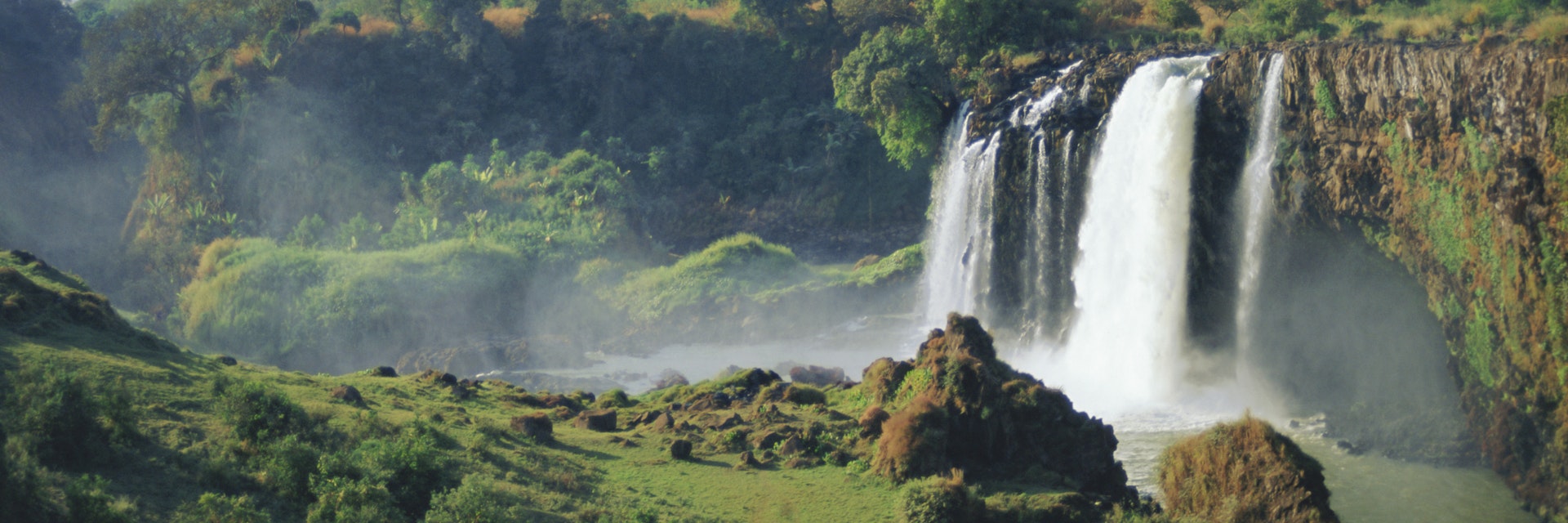The Blue Nile looks like a sluggish beast as it meanders out of Lake Tana, but not far out of Bahir Dar you’ll see the Nile in a very different mood. The river pours over the side of a sheer 42m-high chasm and explodes into a melange of mists and rainbows (best at 10am) before continuing on its tumultuous path to Khartoum, where it finally gets to kiss the White Nile.
The catch to this impressive scene is that hydroelectric projects upstream have stolen most of the energy from Tis Abay, the ‘Nile that Smokes’. Though far smaller than its natural 400m-wide flow, the three-pronged waterfall is still jaw-droppingly huge in August and September. From around January or February until March it’s now known as ‘Blue Nile Shower’ and it’s not really worth a visit. The in-between time is still beautiful enough that most people enjoy the trip (though note that one of the hydro plants only operates on standby and if it’s turned on during this time the waterfall gets turned off). You may want to ask fellow travellers who’ve recently been to the falls about the flow, as tourist-industry operators won’t always give you a straight answer.
The ticket office is at the very end of the road through the town of Tis Abay. The road to the falls starts 50m west of here and it’s 1.5km to the start of a rocky footpath that leads down to a 17th-century Portuguese bridge (which was the first bridge to span the Blue Nile) along the so-called eastern route. From here the trail climbs up through a small village and a gauntlet of children selling souvenirs to reach the main viewpoints. Some people backtrack from here, but the better option is to take the suspension bridge over the narrow Alata River and walk down to the base of the falls. In the dry season you can swim at the bottom and walk behind the watery curtain. You can complete a circuit by using a path above the falls and crossing the river by motorboat. The boat service usually operates 7am to 6pm, but when the river runs too fast the boats can’t cross. Look for crocs during dry-season mornings. The entire walk is about 5km and takes about 2½ hours with lots of gawping time. As it’s not very steep, less energetic or mobile people may want to approach and return from the falls along this western route.
The falls are located 28km southeast of Bahir Dar down a bad dirt road; the first 10km were being sealed at the time of writing. Buses from Bahir Dar leave about hourly for Tis Abay village (Birr15, one hour). The last bus back usually leaves about 4.30pm, but to be safe, plan to return around 3.30pm. You don’t need to pay anyone to hold a seat for you. If you miss the bus, hitching back isn’t tough, though it will probably be expensive.
Zelalem Memory in Bahir Dar can organise excursions here for Birr1200, which includes a vehicle, fuel and a driver; a guide costs Birr400 extra. It's pricey, but less so if you can get a group together.
